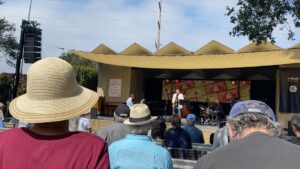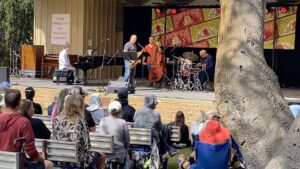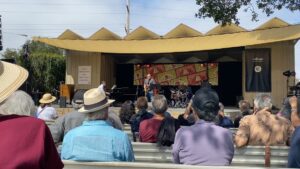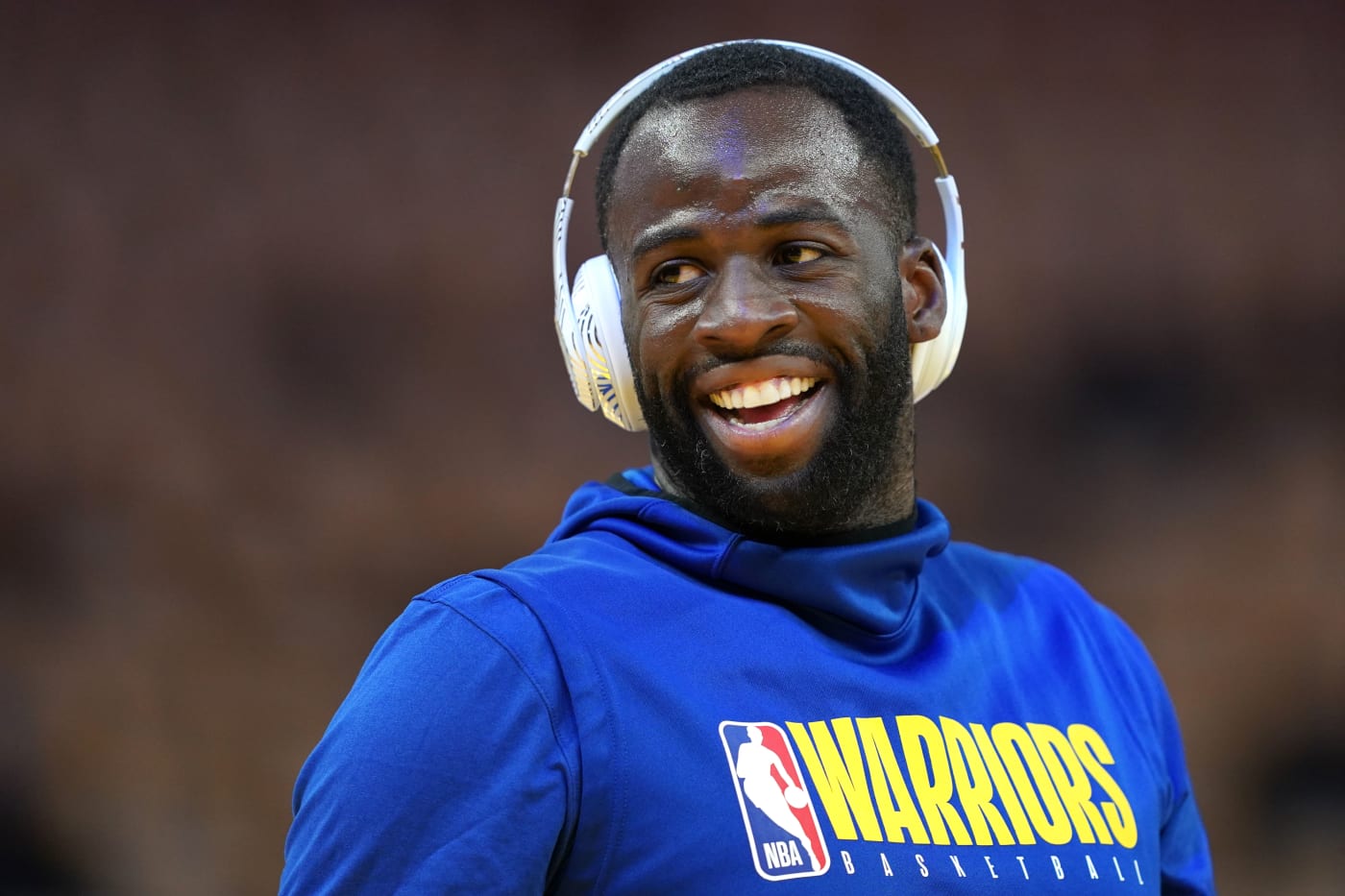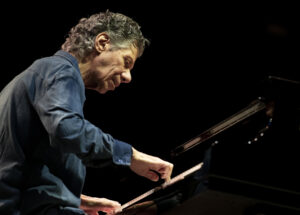Too much has being happening both in music and in life for me to keep up on this website. BUT had to post about this. So honored to have played the Garden Stage at the 65th annual Monterey Jazz Festival with my friend and co-leader, the amazing and legendary Mike Clark. We played to a full house of happy listeners, joined by the superb Alex Claffy on bass and stellar Matt Clark on piano. More to come, including my heading off to New York in about 10 days, aiming to record some of this new material with MC and friends. Here is a little bit of video from folks who were there, to whet your appetite. More to come once we record it, maybe even sneak previews of what will be coming out next year…
